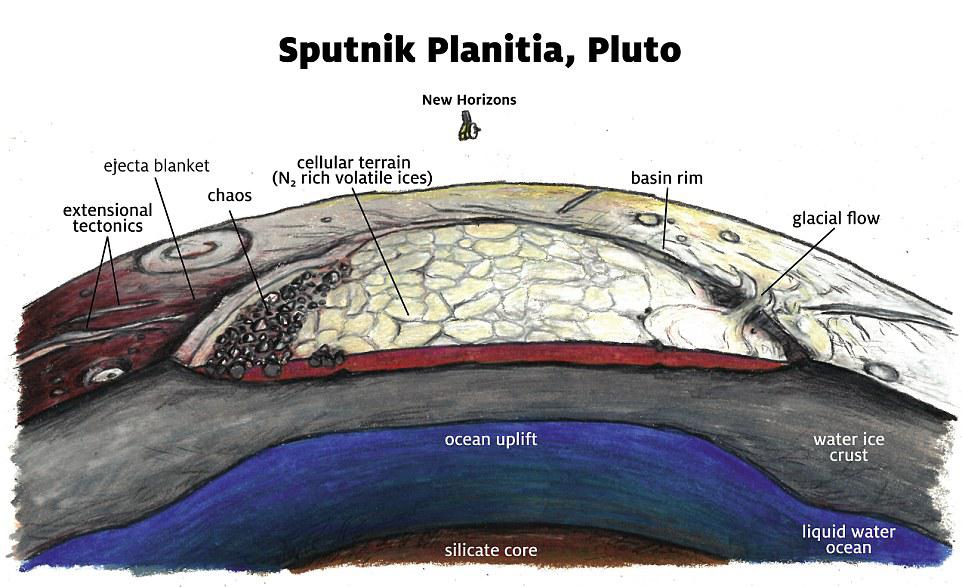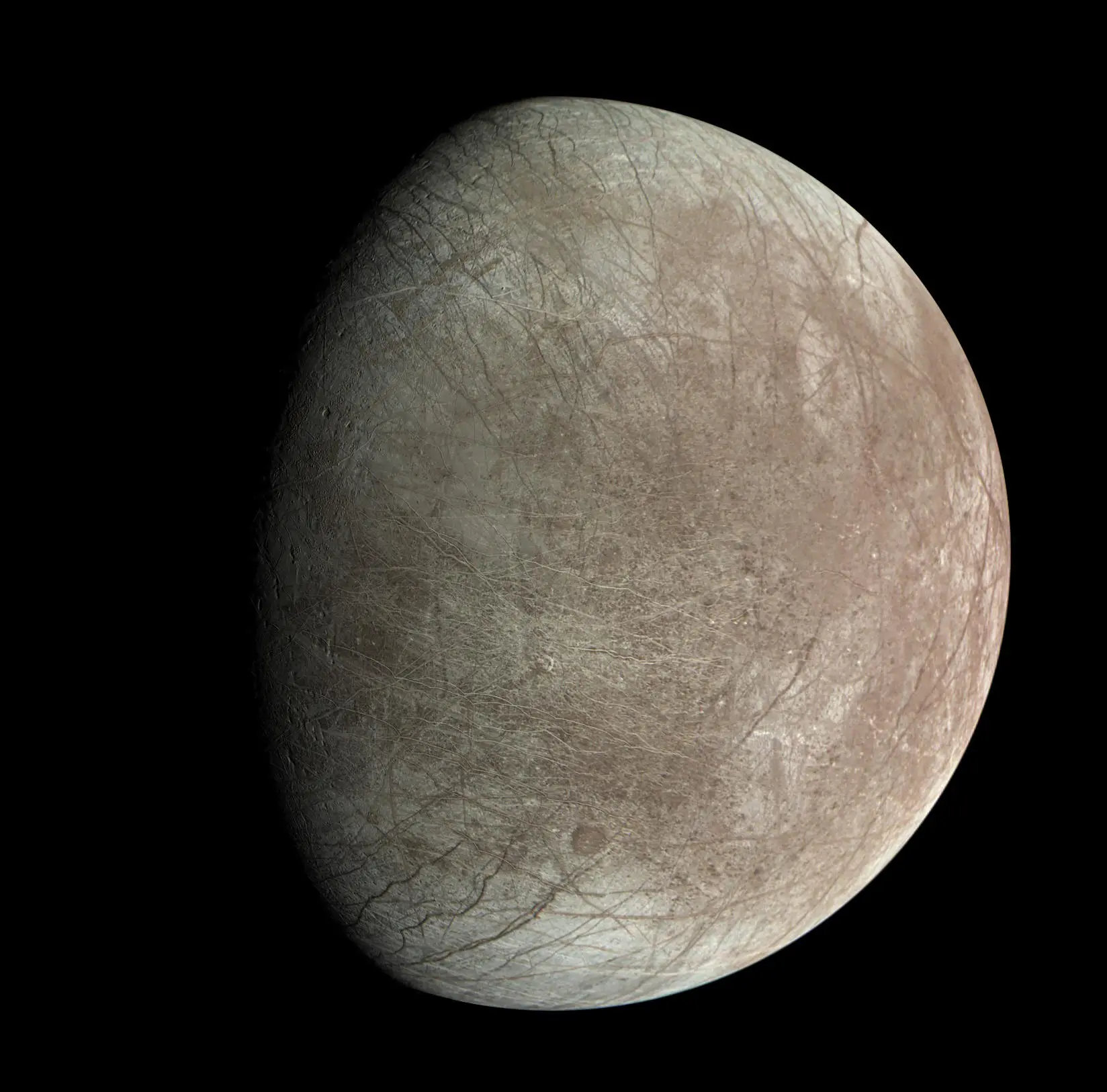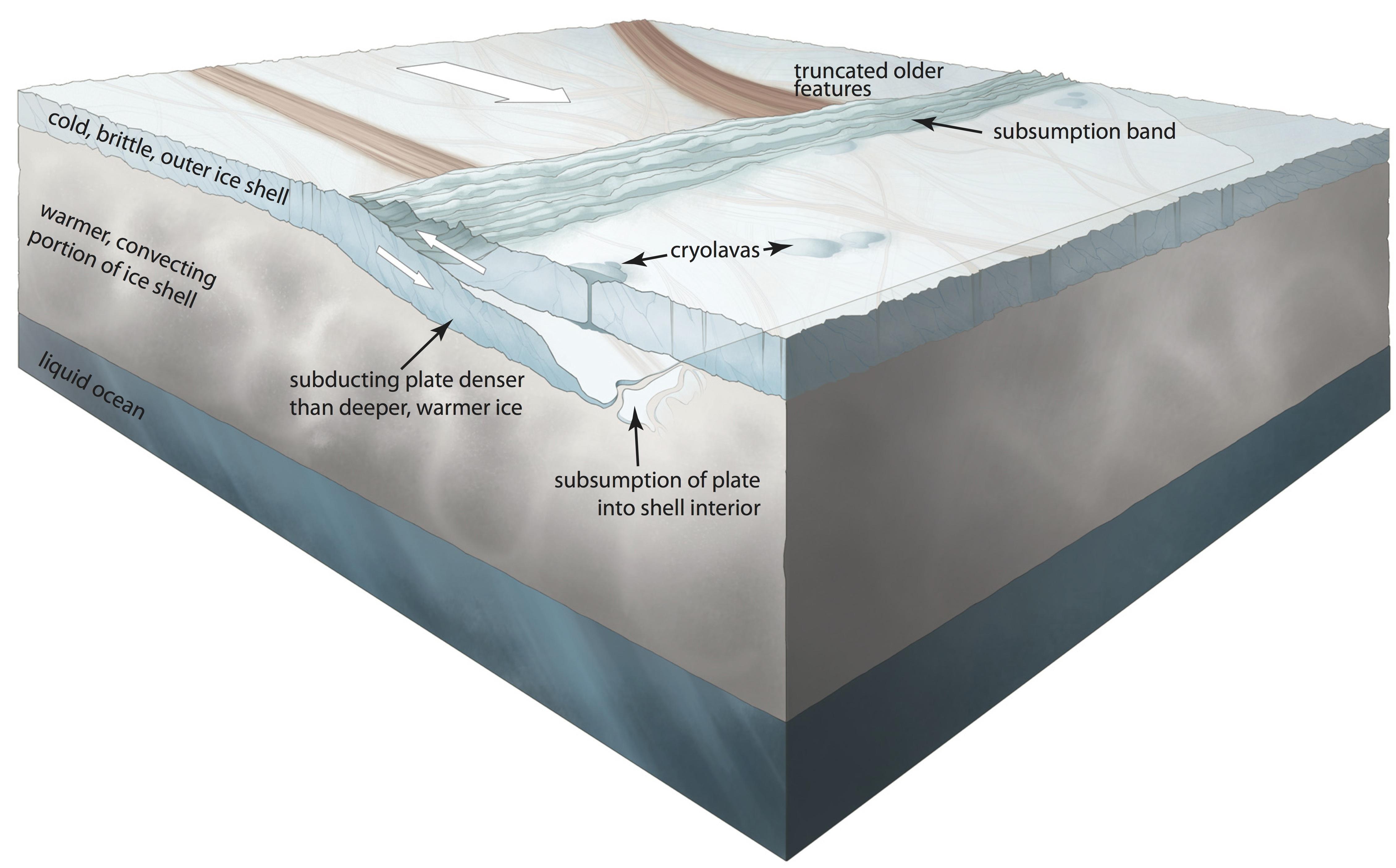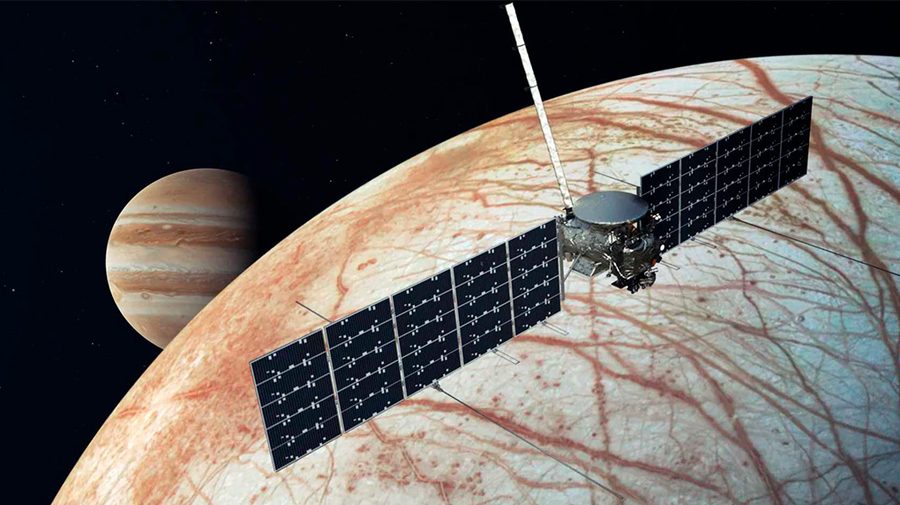How NASA’s Europa Clipper helps the hunt for alien life

- NASA’s Europa Clipper mission, launched on October 14, 2024, will fly by Mars in early 2025 and Earth in late 2026 before arriving at Jupiter’s system of moons in 2030.
- Once there, it will use the gravity of a number of Jovian moons, including Callisto and Io, to make more than 40 close passes of Europa: Jupiter’s ice-covered moon with a subsurface liquid water ocean.
- With so many ice-covered worlds with subsurface oceans, including Europa, Enceladus, Triton, and Pluto, the possibilities for life are tantalizing. Here’s why exploring these worlds is so revolutionary.
With such large numbers of planets, moons, stars, and galaxies present within the observable Universe — so many of which have been confirmed to have similar raw ingredients to those found in our own Solar System — it seems inevitable that alien life must be out there somewhere. How are we going to find it? In general, there are two main methods that astronomers are leveraging today.
- SETI, and SETI-like efforts, that look directly for signals, largely in the radio portion of the electromagnetic spectrum, that could potentially indicate the presence of intelligent extraterrestrials. Any signal of a non-astrophysical origin, or that shows characteristics of it willfully being sent Earthward, would be revolutionary.
- Similarly, astronomers using methods like direct exoplanet imaging or transit spectroscopy could reveal potential biosignatures, or at least what we might more responsibly call “bio-hints,” that would leave their mark on an inhabited planet’s atmosphere.
However, there’s a third method that’s generally underappreciated: looking up close at the easily accessible worlds, the ones found right here in our own Solar System, for the possibility of microscopic life. This could be past, ancient life, present, dormant life, or even present, active life; any of these would represent a fascinating breakthrough. While most such searches focus on the surface of Mars or the cloud-decks of Venus, the large, icy bodies found at relatively large distances from the Sun might hold the greatest promise of all. Here’s how NASA’s new Europa Clipper mission helps humanity hunt for alien life.

It’s true that there are many ingredients that are known to be essential to life processes here on Earth, but the cosmos itself seems to offer a variety of other possibilities as well. All known forms of life rely on information being encoded in some type of genetic material, and those genes in turn encode instructions for the creation of proteins that enable life processes. While human beings rely on DNA (deoxyribonucleic acid) to encode information, it’s theorized that simpler molecules, such as single-stranded RNA (ribonucleic acid) or even the synthetic PNA (peptide nucleic acid) could serve the same purposes. Life on Earth is carbon-based, with the atomic species:
- carbon,
- oxygen,
- nitrogen,
- hydrogen,
- and phosphorous,
all playing essential roles in all life processes. Ions deriving from salts, such as calcium, sodium, potassium, magnesium, and chloride play major roles as well, as do atoms such as sulfur, iron, and copper, among others. All of these are ubiquitously found throughout the cosmos, as they’re formed copiously within stars or — in the case of hydrogen — remain as leftovers from the Big Bang.
However, there’s one ingredient essential to life processes on Earth that it’s very difficult to imagine isn’t involved in life processes everywhere: liquid water. While liquids of other species (nitrogen, methane, even carbon dioxide with enough pressure, etc.) certainly exist throughout the cosmos, water’s polar nature and ability to act as a near-universal solvent might make it a truly necessary ingredient for life.

That’s why there’s a saying that’s become so widespread among those who hunt for alien life: to find it, follow the water. It’s why the water-rich past of Mars makes it such an interesting candidate for past, ancient life. It’s why measuring the amount of water present in Venus’s cloud decks is such a key piece of information in determining whether it’s a suitable environment for biological processes. And it’s why ice-covered worlds in our outer Solar System remain such compelling candidate locations for life, even today: 4.5 billion years after the completion of the formation of the planets and (most of) the moons in our Solar System.
In particular, there are five large worlds out beyond the asteroid belt that have fascinating properties that could be extremely life-friendly.
- Europa, the second Galilean moon of Jupiter, with an ice-covered surface and a liquid water ocean beneath it, which receives large amounts of internal energy from Jupiter’s tidal heating.
- Enceladus, Saturn’s water-ice dominated moon, that often spouts enormous plumes of water-ice hundreds of kilometers up above its surface in geyser-like fashion.
- Triton, once the largest Kuiper belt object, which was gravitationally captured by Neptune long ago and is covered in various ices, again with a subsurface ocean beneath them.
- And Pluto and Eris, which are the two large, most massive ice-rich bodies in the Kuiper belt, both strongly suspected to have subsurface oceans as well.

All five of these worlds, importantly, have several important properties in common with one another.
- They all formed from the same pre-solar nebula as our own planet, with similar relative and absolute abundances of heavy elements.
- They all are either thought or confirmed to have ice shells on the exterior, where cracks, pits, and schisms in the ice are common.
- They all show evidence, either directly, indirectly, or both, for the presence of a thick, salt-rich subsurface liquid ocean of liquid water beneath those exterior ices.
- All (except Eris) are certain to possess large amounts of internal heat, owing to the tidal influence of a near-neighboring massive body.
- And, despite their large distances from the Sun, all should experience heating and cracking in those ices due to a combination of direct sunlight and internal heat, which leads to hazy volatiles and even plumes of (swiftly frozen) water ejected up through those cracks and fissures from the ocean underneath those ice.
In other words, all of these worlds, and perhaps even others, are likely to possess the sugars, alcohols, aldehydes, nucleobases, and amino acids that serve as organic, precursor ingredients to life. Complex carbon molecules should be ubiquitous, in an aqueous, salt-rich environment, along with energy sources arriving not just externally — i.e., from the Sun or an orbiting parent planet — but internally as well, from deep-sea hydrothermal vents.
Since these locations, on Earth, are home to classes of organisms known as extremophiles, it makes sense to consider that a subsurface ocean with similar hydrothermal vents on another world may well be a “hotbed” for extraterrestrial life.

It’s understandably easy to overlook the possibility of simple, microscopic life here in our own cosmic backyards, as the bigger prizes of intelligent aliens, complex extraterrestrial life, and worlds beyond our own Solar System that may have been completely transformed — as Earth has been — by the sustained, long-term presence of life all hold a much greater allure than the rather mundane possibility of primitive life that’s nearby. However, because our own corner of the great cosmic expanse is so thoroughly accessible, with spacecraft taking at most years to reach any of these destinations, this third possibility offers the option of finding and studying life up close, in situ, with modern laboratory equipment.
The first step, of course, is figuring out whether or not such life forms exist, and then the follow-up steps will be to locate, identify, characterize, and study these foreign organisms, assuming they do, in fact, exist. It could teach us some incredibly profound answers to a number of existential questions we all carry around here in 2024, including:
- whether life elsewhere in the Solar System is related to life on Earth,
- whether life processes elsewhere encode genetic information similarly or differently to life on Earth,
- whether any of the dozens of other naturally occurring species of amino acid are leveraged in extraterrestrial life processes,
- and to teach us something about just how common or rare abiogenesis — or the process by which life arises from non-life — actually is in the Universe.
With only one data point for life in the Universe (here on planet Earth), we can say very little that’s meaningful about these probabilities and the various possibilities. But with a second instance of life somewhere in the Universe, we would suddenly gain sagacious wisdom.

With analogues of the asteroid belt, Kuiper belt, and even evidence for an intermediate belt found in stellar and planetary systems throughout the galaxy, and with large numbers of giant planets (all potentially with their own lunar systems) found at all distances from their parent stars, the truth is that there may be more of these ice-encrusted worlds with subsurface oceans than there are worlds like Earth found throughout the Universe. Whereas there may be around 10 billion planets in the Milky Way that have Earth-like sizes and are located at Earth-like distances from Sun-like stars, there are likely hundreds of billions or even potentially trillions of Europa-like worlds present throughout the galaxy.
While they might not be the most likely locales for complex, intelligent life — rumors of whale-like creatures in Europa’s oceans are probably only fictitious products of an overactive human imagination — worlds like Europa may turn out to be the most common reservoirs where life arises in the entire cosmos. Although it’s true that the Europa Clipper mission itself isn’t the best instrument for finding out whether Europa itself is an inhabited world, it’s designed to build on prior missions, such as the Juno mission that’s been exploring Jupiter and its moons since 2016, with the primary science goal of determining whether there are locations underneath the icy crust of Europa that could potentially be harboring life.

The Juno mission, in particular, was key in motivating the Europa Clipper mission. While we’ve known for decades that Europa is covered in ice, the Juno spacecraft made close flybys of Europa during 2022, and made three major discoveries.
- The icy crust of Europa migrates over time, suggesting that the ice is a shell that freely floats atop a layer of liquid, and moves over time.
- Features that appear consistent with “plume stains” are common in the Junocam data, suggesting that Europa’s subsurface ocean, much like that of Saturn’s Enceladus, ruptures through the ice shell and regularly sprays material upward into space.
- And Europa’s surface, the smoothest of any solid body in the Solar System, is consistent with both a thick ice crust and thin ocean, or with a thin ice crust and thick ocean, either one of which could provide a life-friendly environment.
Just as the discovery of hydrothermal vents on Earth, first spotted deep in the Pacific Ocean in a region known as the Galapagos Rift, showed us new possibilities for living organisms here on Earth, better understanding the interior of Europa, including details about its subsurface ocean, could provide a revolution for life all throughout the Universe. Although the Europa Clipper mission won’t have the final say, it represents an important step toward perhaps the biggest goal in all of science: answering the question of whether the life forms we know are alone in the Universe.

Exploring the worlds of the outer Solar System is no small feat, and still requires years of time, our most powerful rockets, and several gravity assists in order to make it happen. During its October 14, 2024 launch, NASA’s Europa Clipper had only a 15 second launch window to successfully avoid colliding with other orbiting satellites. Hitting that launch window enables it to reach the proper location in orbit to get the correct gravity assist from Mars in March of 2025, which will set it up for a late-2026 gravity assist from Earth, which will put the spacecraft on a trajectory to rendezvous with and be gravitationally captured by Jupiter and its system of moons in 2030.
Once there, multiple gravity assists between the Galilean moons and the Europa Clipper spacecraft will shepherd the satellite into an elliptical orbit that makes several close approaches to Europa itself, with the closest expected pass taking it just ~25 kilometers (15.5 miles) above the surface of this ice-enshrouded moon. Despite the harsh radiation emitted by Jupiter itself, the planned elliptical orbit of Europa Clipper means that it should remain operational for nearly four years: enough time for more than 40 and perhaps even close to 50 flybys before it’s rendered non-operational. Even though Europa Clipper has a 5.5 year journey to Jupiter, it will beat the ESA’s JUICE spacecraft there by more than a full year, despite the fact that JUICE launched 1.5 years before Europa Clipper did.

Europa Clipper will include a number of scientific instruments, including spectrometers and cameras, that will map out the icy surface of Europa in high resolution, will characterize the composition of its thin atmosphere, will use radar technology to find and localize reservoirs of subsurface water, and will use a magnetometers and accelerometers to measure the gravity field of the world itself, revealing details about its under-ice ocean as well as its deep interior. If Europa is being significantly heated by Jupiter’s tidal forces, and if those tidal forces are causing undersea lava flows to emerge on the floor of Europa’s oceans, the instruments aboard Europa Clipper will help make those discoveries.
Additionally, with such close flybys of Europa itself, the Clipper mission will have a chance to be the first spacecraft to fly through watery plumes emitted from an icy body’s oceanic interior. If the plumes are small, thin, and sporadic, they may be beyond the ability of the Europa Clipper spacecraft to detect, but if they’re thick and large:
- the EIS instrument could directly image them, including at very high resolution during a flyby,
- the UVS instrument could image them in ultraviolet light, including when Europa (and its plumes) occult a background star,
- and the onboard thermal camera could find cryovolcanoes and regions where the icy crust is particularly thin, where surface hotspots could indicate either recent or even active eruptions.
Dependent on the results of missions like NASA’s Europa Clipper and ESA’s JUICE, we may learn that Europa is worth investigating in much greater detail as a potential hotbed of life.

For as long as humans and our ancestors have looked up at the night sky, we’ve wondered with insatiable curiosity whether any of the glittering points of light up there — both the ones we can see as well as the ones beyond the limits of our vision — hold the promise of life beyond Earth. Despite all we’ve learned to date about the planets and moons elsewhere in the Solar System and galaxy, and despite all of the discoveries we’ve made about their contents and properties, our first definitive detection of biological activity anywhere other than on planet Earth or on spacecraft willfully launched from Earth remains hitherto elusive.
With missions such as NASA’s Europa Clipper, leveraging present-day knowledge, present-day technology, and a modest, limited budget, we’re taking the largest responsible steps forward that we can to help answer these enormous questions that have burdened humanity for the entire history of our species. We know that Mars had a watery past; did it ever have life? We know that Venus wasn’t always a scorching, acid-drenched world; was it once home to life? And of the frozen worlds with oceans beneath their ice-rich crusts, including Europa, Enceladus, Triton, Pluto and more, are any of them home to biological activity of extraterrestrial origin?
The dream of an affirmative answer, for the first time in our species’ history, may finally be just one generation of science missions in our collective future. Properly informing ourselves, today, has the potential to unlock the answers of a lifetime in the years and decades to come.





